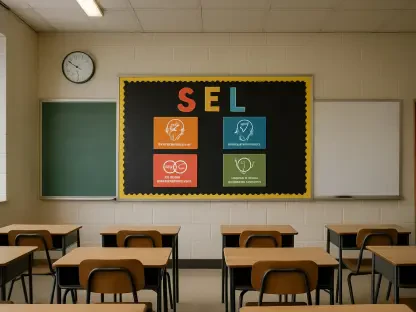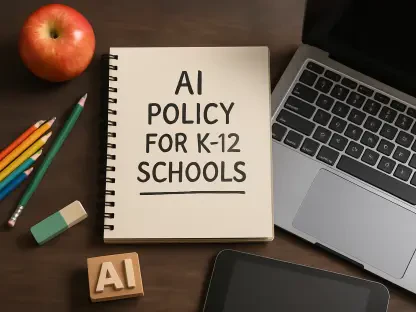The explosion of educational technology (EdTech) has fundamentally reshaped how schools and universities manage learning, operations, and student data. This rather sudden expansion brought both powerful opportunities and serious risks.
Student information systems and virtual learning environments are tools that fetch and retain a significant amount of input. The quality of data that flows through these platforms can enhance learning and operations.
However, it simultaneously raises significant questions regarding privacy and security issues. That is why schools in the US are required to comply with national and state data privacy regulations. Failure to abide by the rules may result in leaks, penalties and the loss of trust by students and their families. Other issues that they encounter are worn-out systems, tight budgets, and poor staff training.
This article examines why confidentiality should be a concern in EdTech, what challenges US institutions face when complying with these laws, and what action schools and universities can take to ensure better data management and privacy.
Importance of Data Privacy in EdTech
The information learning management systems collect assists in designing a personalized and optimal teaching experience. It is quick to identify problematic pupils and formulate strategies to aid them. Yet, unauthorized access, breaches, and misuse of student-related records may occur if schools fail to guard them efficiently. Even identity theft can happen during a data leak and generate legal problems.
Data privacy is an important issue in education technology. Schools need to handle people’s details carefully to build trust and meet ethical standards. It is their duty not to expose any private knowledge regarding users to danger. This is why schools need reliable EdTech tools to safeguard details on a global level.
Key Data Privacy Laws in the United States
Most EdTech agencies rely on valuable, measurable inputs and reports to restructure their activities. For example, American schools store and analyze information about pupils to track their academic achievements and evaluate the effectiveness of the curriculum. Safeguarding students’ files is essential since failure to do so may result in confidential data leakage.
That is where the Family Educational Rights and Privacy Act and the Children’s Online Privacy Protection Act come in. The first one obligates schools to obtain written consent from eligible parents or students before the institution can disclose personal information. The second one applies to children under the age of 13 by restricting the collection of their profile details through websites and online services. Not surprisingly, compliance teams and IT departments feel extra pressure to maintain consistent and legally sound data practices.
Challenges Multi-State Educational Institutions Face
Besides federal legislation, individual states within the US have devised their own governance regulations to better safeguard personal details about attendees. For example, there are the California Consumer Privacy Act and the Student Online Personal Information Protection Act. These legislations are supposed to enhance data transparency, give parents greater control, and enhance school security.
Nonetheless, schools and universities, particularly those operating across states, have a problem without a national standard. Although some basic guidelines exist, some federal and individual state laws may impose conflicts. This quilt of regulations prompts schools to adapt to evolving legislation and change their compliance strategies. Cooperation with educational technology vendors is the first step toward this.
Vendor Management
Partnering with educational technology providers is necessary to streamline digital operations and strengthen communication and management. Nevertheless, although vendors are in charge of data processing and delivery of security updates, educational institutions have a legal duty to ensure that third-party activities adhere to privacy regulations.
However, sometimes they are not transparent about how they utilize insights, and are rarely able to conform to high regulatory standards. Some are characterized by poor security practices and general usage protocols for sensitive information that may leave schools and colleges vulnerable to legal implications.
Bottom line, organizations should do more than check the safety of their systems and ensure their work is good. This practice is especially important in the case of disorganized IT infrastructures that impact data storage. Therefore, virtual learning enterprises must write a simple data processing agreement that states how they can use gathered insights and how quickly they must tell others if there’s a problem.
Data Silos and Legacy Systems
A considerable number of learning institutions are using decentralized IT infrastructure and ineffective apps. These legacy systems lead to the creation of silos, which make it revere to store and manage a single database.
Moreover, when information is stored on various platforms in educational institutions that lack communication with one another, technical problems emerge. Some access controls, monitoring of data use, and detection of unexpected or ongoing gaps can be difficult to use.
Consequently, institutional records are prone to abuse or malicious efforts, and sensitive details are left vulnerable to a range of online threats. Moreover, legacy setups do not contain the latest security features, which exposes them to non-compliance risk. Thus, depending on the company’s budget, adopting cloud-based integrated educational technology is the ideal way to fix these problems.
Limited Resources
As much as digitization improves academic and administrative processes, not every institution can acquire high-tech tools. For example, community colleges and small district schools eventually have limited funds, which they tend to devote to educational materials and teacher wages.
Owing to this, they cannot conduct risk assessments, hire IT staff, or adopt complex data privacy programs and systems. These limitations prevent institutions from complying with the latest laws and good practices.
In this way, they depend on old policies or can even miss significant compliance requirements because they lack particular legal or technical expertise. Unfortunately, the shortage of data privacy professionals deepens the problem even further.
Inadequate Staff Training
Although stakeholders involved in the institution (teachers and administrators) deal with data regularly, not everybody is trained correctly. However, they can learn about privacy dangers and laws. For example, they can research how to avoid getting scammed by phishing emails, they may wrongfully store confidential details about the students, or they may share their login credentials ineffectively.
Comprehensive training programs, which enable staff and teachers to be acquainted with safety mechanisms related to confidentiality and protection, are the only solution to alleviate such inadvertent mistakes and inconsistencies. In addition, they prepare them to understand what Personally Identifiable Information is, how to identify phishing fraud, and what they should do immediately in the event of an unknown data breach.
Best Practices of Educational Institutions
As privacy laws evolve, schools must adopt proactive policies to ensure information confidentiality and comply with federal and state regulations. In addition to legally enforced directives on data security, it is good practice to have robust security measures to build credibility among learners, parents, and other stakeholders. The following best practices provide the key steps educational institutions may take to handle records responsibly, reducing risk and reinforcing the overall governance environment.
Establish Clear Data Governance Policies
One of the initial steps is to develop clear principles that describe how student records will be managed, including collection, storage, access, sharing, and deletion. The policies are supposed to distinguish the employees in charge of management, workflow approvals, and the establishment of data integrity and accuracy standards. This step will assist in crafting an effective data governance structure that keeps practices consistent among the departments and reduces unauthorized access to information.
Select Trusted EdTech Vendors
The key is to move beyond the product description and features and evaluate EdTech vendors’ security policies and data privacy arrangements. Popular software providers such as MasterSoft are also determined to show openness regarding their protocols.
Additionally, they are open to signing protection agreements and have certifications like Service Organization Control 2 and International Organization for Standardization 27001 that guarantee that the privacy laws of the state and the federal government will be adhered to. The major EdTech offers can also provide records portability and tailored privacy choices.
Carry Out Regular Audits
Perform constant check-ups of internal procedures and external systems through cooperation with established EdTech companies or the establishment of an internal IT staff. Management can review user access logs, assess technical security controls, and determine whether the vendor follows the stipulated standard practices. Periodic audits play a significant role in ensuring the staff adhere to the established procedures and determining whether they require additional training.
Provide Adequate Training to Staff
One-time training is not enough. Therefore, institutions should continuously develop their employees to maintain best practices. However, the development must be tailored by role. For example, the instruction that teachers receive on how to hold or store information about students is not similar to the requirements for the IT staff or the staff in the administration office.
Conclusion
The fast rate of digitizing education services has left the majority of educational institutions unable to cope with their data management duties. Student records that contain sensitive information may be subject to unauthorized access without efficient privacy strategies. The broken US regulations make it difficult to follow the rules in multi-state institutions, and additionally, old technology, tight budgets, and limited expertise also hinder the required safety.
Schools and colleges need to take a proactive and comprehensive approach. They must upgrade their technology systems, build strong and clear relationships with their EdTech partners, and create effective data governance systems. Continuous staff training is also crucial, and all administrators and teachers should learn about privacy requirements and security measures best practices.
Finally, protecting student data should not constitute a legal need but rather an ethical duty and the foundation of developing trust with students, parents, and communities. By focusing on privacy, educational institutions will be able to enjoy the promise of EdTech and protect the rights and futures of their students.









